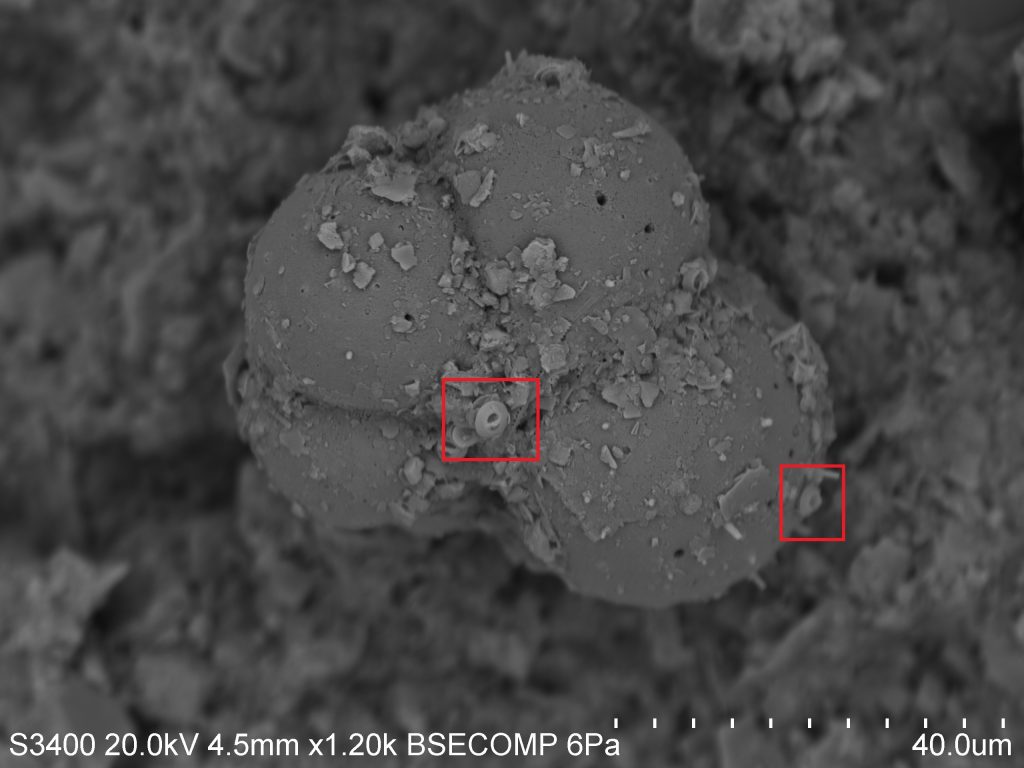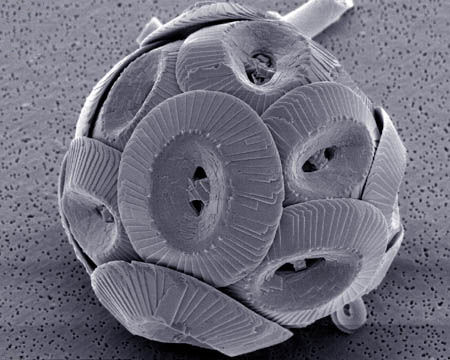Chances are you'll be seeing a fair bit of discussion regarding plankton as we go forward, because (1) they show up in many of our samples, and (2) there's a lot we can learn by studying them! SEM is especially useful for the study of plankton, as their small size makes traditional compound microscopes somewhat ineffective. This photograph, taken during our first run-through with the SEM, shows an image at 1,200X magnification, as compared to the 100X magnification you might hope to get with a standard scope!
In the above photo we can see examples of both zooplankton (microscopic animals) and phytoplankton (microscopic plants). The first is the obvious, bulbous species in the middle of the image. This is the test, or shell, of a Foraminifera. Forams represent an ancient and speciose group of zooplankton which live mostly in sediment (as is the case here), but also in the water column. Within the red squares you will see a second, smaller phytoplankton species known as a Coccolithophore. The round plates are known individually as placoliths, and bundle together around the algal species to form a coccosphere. I've included the photo below to give you an idea of how they appear when alive in nature. Similarly, coccolithophores inhabit both benthic and open-water habitats.
Plankton species such as these can provide a surprising amount of information not only about themselves, but also about the environment in which they grow. The tests you see here are made of calcium carbonate (CaCO3) which the organisms "pull" out of the water and use to build their hard parts. As such, isotopic analysis of these tests can tell you about the atmospheric and oceanic conditions at the time of their formation, since the two systems are linked in the carbon cycle. When the organism dies, calcium carbonate sinks to the bottom of the ocean in the form of coccoliths and other tests and become a part of the sediment record, which can be studied later by scientists as part of a sediment core.
There are many other applications in the study of plankton, some of which we will likely cover in future installations. Stay tuned, and remember: It's the little things.



